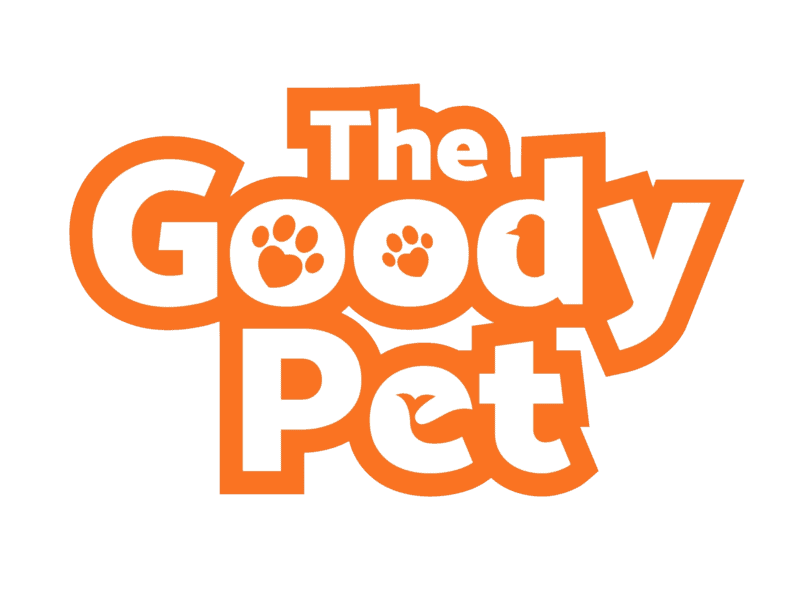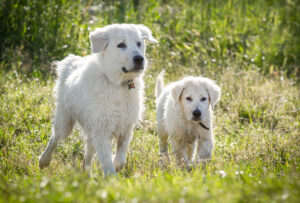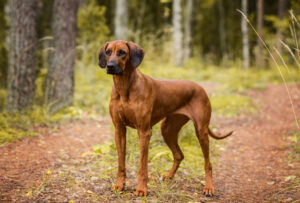Let’s be honest here, the idea of a Corgi and Labrador mix is a little difficult to envision. I mean, they are so different from the shape and size of their skull features. Despite the differences, the unlikely pair makes what is easily one of the most adorable mixed-breed doggies.
A Corgidor is a mixed breed dog from a male Pembroke Welsh Corgi and a female Labrador Retriever. Most breeders use the Pembroke Welsh variety of the Corgi. However, it is not impossible to find a corgidor from a Cardigan Welsh Corgi, even though these are quite rare. In terms of physical appearance, the Corgidor bears a closer resemblance to the Labrador parent in terms of size and skull features. Other features like body shape, coat traits, health, and even personality are harder to predict and depend on the strongest genes.
The Corgidor is relatively new to the designer doggy market. However, with parents as popular as the Corgi and Labrador are, it is not so hard to see why this dog is already a hit. So if you want one of these doggies, then you are definitely on to something awesome. Let’s take a closer look at what is in store for you as a future Corgidor owner, including the critical health issues in our second section. But first, let us take a look at what to expect from their appearance.
What Does A Corgi Lab Mix Look Like?

Due to the major physical differences between Corgis and Labradors, the Corgidor’s appearance varies greatly from one dog to the other. Corgis are known for their short stature, long torso, and disproportionately short limbs. They also have very distinct triangular heads with a medium muzzle and perky ears.
The Labrador, on the other hand, is considered a large dog and has very proportional dimensions. The skull is dome-shaped with long, droopy ears and a long snout.
A Corgi Lab dog on average measures in 15 inches height and weighs about 40 to 50 lbs. They are therefore considered medium sized dogs. More often than not, these doggies take after the Corgi’s side of the family when it comes to the noticeably long torso.
While the legs also tend to be short, they are considerably longer than those of regular Corgis, offering a bit more proportion to the build.
The Corgidor often takes after the Labrador parent’s head shape and facial features. They may have a long snout and dome head, but it is also possible for the mixed doggy to have a triangular head shape.
When it comes to the shape of the ears, it is an almost equal toss-up with these doggy mixes producing either perky or droopy, medium-length ears.
Another key physical feature is their medium to long fur coats, which may be smooth or coarse. These coats come mainly in black, tan, or sable and may have white markings on the face, paws, neck, and chest.
What Is The Lifespan Of A Corgi Lab Mix? Common Health Problems Of A Corgidor
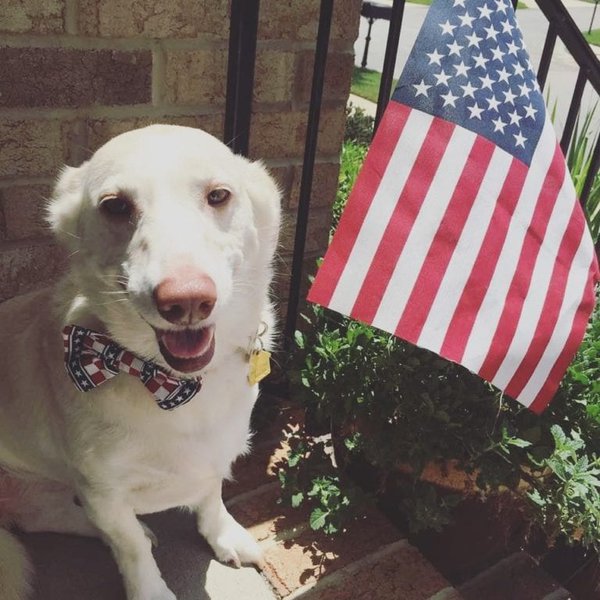
Corgidor doggies have a lifespan of 10 to 13 years. This is a lick short of the 12 to 15 year life expectancy for purebred Corgis but is to be expected with medium and large dogs. They tend to live healthy lives as long as a healthy diet and there is adequate exercise.
However, there may still be a few health issues that you will have to deal with. Here are 6 of the most common health problems of a Corgidor.
Intervertebral Disc Disease
This IVDD is a skeletal abnormality that results in instability of vertebral joints leading to backaches and even paralysis if left unaddressed.
Bloating
Corgidors suffer from various gut issues, including volvulus, which could cause not only bloating but also constipation and indigestion.
Ear Infections
These are more common with Corgidors that have droopy ears than with those that are perky. They are mainly either bacterial or fungal and result from leaving moisture in the ears after washing or any other contact with water.
Shoulder And Hip Dysplasia
This condition is characterized by abnormal joint sockets and, as a result, abnormal joint connections. These abnormalities affect mobility as well as the health of the specific bones involved.
Eye Problems
There are a number of these, including conjunctivitis due to allergic reactions, cataracts, and progressive retinal atrophy.
Obesity
A Corgidor can really throw down those kibbles, and if you do not watch their diet, it is very easy for them to become overweight or even morbidly obese.
How To Take Care Of A Corgi Lab Mix?
Corgi Labrador mixed doggies need very intentional and consistent care. This will help you prevent or at the very least reduce the impact of some of the diseases we highlighted above. Proper care also means that you get to give your doggy the highest possible quality of life.
Go With A Lower Carb, High Protein Diet
A lower-carb diet is important if you are dealing with an obese Corgidor. On the other hand, the high protein builds muscles to support the often insufficient skeletal system.
In both cases, we recommend you try Pet Plate. These doggy meals are made using all-natural ingredients, emphasizing real and high-quality sources of protein.
Supplements For Bone And Joint Health
With problems like intervertebral disc disease to worry about, your Corgidor will need as much help as possible strengthening their skeletal system. The Doggie Dailies Glucosamine supplements are the way to go with compounds like glucosamine, MSM, chondroitin, and hyaluronic acid.
Engage Them In Physically And Mentally Stimulating Games
Labrador Corgi mixed dogs love to stay active both physically and mentally. They often lash out and may even display aggressive behavior if they are not adequately stimulated in both cases. Taking them out for playtime once every day is really all you need to keep them happy.
Start Obedience Training As Early As Possible
Corgis and Labradors have a stubborn side that is passed on to their mixed puppies. The best way to prevent this from being a problem later on in life is by simply starting your training as early as possible.
Does A Corgi Lab Mix Shed As Much As Their Parents?
Both Corgis and Labradors are considered moderate shedding dogs. They have a double-layer coat with a short and fine inner layer and a longer outer one. This makes them prone to matting with poor grooming. They, therefore, require consistent tender loving care to keep their fur looking and feeling nice.
The most important aspect of grooming these Corgidors is ensuring that you brush their fur regularly. Due to their thick coats and long fur, brushing should be done 2 to 3 times every week. This helps to remove loose fur and detangles any knotted clumps to prevent matting.
DakPets Pet Grooming Brush is easily the best tool for the job with its firm bristles for effective brushing and ergonomic handle for comfortable use.
Another handy grooming tip is to time your trimming sessions with the Corgi Labrador mix’s shedding seasons. This usually happens around spring and autumn. During these months, their fur needs extra care to minimize the shedding around your home.
In addition to grooming, you could handle the shedding situation in your home through effective cleanup techniques. Lint rollers are ideal for getting rid of fur on upholstery and on clothes. Vacuuming also does wonders, whether it is on furniture, carpeting, or even your doggy’s bed.
On the other hand, an air purifier will help you get rid of free fur in the air. The TaoTronics HEPA Air Purifier is ideal in this case. It uses an advanced HEPA air filtration system plus rapid purification fans, ensuring a continuous stream of fresh air.
Are Corgi Lab Mixes Aggressive? Temperaments Of A Corgi Lab Mix
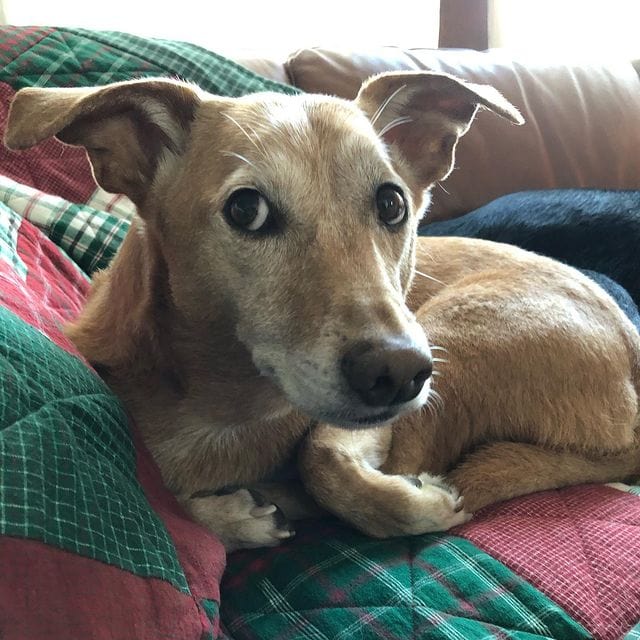
Corgis and Labradors are two of the most gentle and laid-back dog breeds. The Corgi Lab mix is therefore rarely aggressive unless traumatized. With love and good care, you really don’t have to worry about your Corgidor misbehaving.
Here are a few more personality traits to expect from the dog:
Even-Tempered
Corgi Labrador mixed dogs are quite laid back. With a nice meal in their bellies and some time out every now and then, they are content just existing and observing.
Friendly
Corgidors are fantastic pets for families as they get along with everyone, especially children. They are also very friendly with strangers, which means they may not be the perfect guard dogs to work with.
They Are Gentle
While Corgis have a reputation for rough handling and non-aggressive biting, their mix with Labradors comes out more gentle. This is another one in the pro-family column for the doggies.
Eager To Please
Corgidors are suckers for praise and approval. They love to please, and this definitely makes it super easy to housebreak the pooch and even teach it fun skills.
Intelligent
Both Corgis and Labradors are very intelligent, and it rubs off on the mixed breed. They are quick learners and very intuitively protective.
Affectionate
The only thing these doggies may love more than praise is attention and physical affection. They love getting pets and will not hesitate to steal a cuddle or two from you.
Occasionally Stubborn
These furry little buddies have an inclination to be stubborn if they are not trained from an early age, but this is a rare personality trait.
Related Questions
How Much Is A Corgi Lab Mix? A Corgi Lab mix will cost you about $750. They can be more expensive, costing up to $1,500 with larger Corgidors and in cases where prized Corgi bloodlines or the rare cardigan variety is used in the mixed breeding. In addition to buying the dog from a breeder, you could try your luck out with adoption shelters and online adoption forums for a bargain on the pups.
Are Corgi Lab Mixes Kid-Friendly? Pembroke Welsh Corgis and Labradors are considered the friendliest dog breeds, according to the American Kennel Club. It, therefore, should come as no surprise that the Corgidor mixed doggy is just as friendly and affectionate as their parents, if not more. This makes them particularly ideal for families with children.
Are Corgi Mixes Healthy? Corgi mixes are generally very healthy doggies. This is because, on a genetic level, mixing breeds eliminates a lot of breed-specific health issues. However, when the Corgi mix comes out short and with a long torso then they are prone to skeletal health issues. These include intervertebral disc disease and joint dysplasia.
